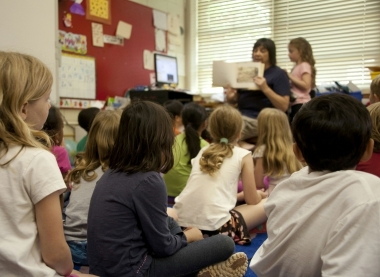Education
Latest
Teacher Recruitment and Retention 2024
A new report from Teacher Tapp and SchoolDash which providing insights into the current state of the teaching in England and an exploration of recruitment challenges in disadvantaged schools.

Now in its fifth year, the annual report by Teacher Tapp and SchoolDash, funded by Gatsby provides a comprehensive review into the recruitment challenges in schools. As well as providing insights to build a longitudinal picture of teacher recruitment and retention, this year’s report includes an analysis of the additional challenges faced by schools in disadvantaged areas. Drawing on data from surveys with over 10,000 teachers and analysis of job advertisements, the research team discovered that:
- In secondary schools, job adverts remain higher than before the pandemic but have decreased by approximately 10% compared to the previous year. Primary school recruitment remains static, with a slight decrease in pupil rolls reducing the overall need for primary teachers.
- While there is slightly less concern over finding adequately qualified primary school teachers, there is significantly more for secondary schools compared to last year, and both remain much higher than in 2020.
- Advertisements for technician positions have dropped by 25% compared to the previous year, possibly indicating schools are managing with fewer technicians or have filled previous vacancies.
In the most disadvantaged schools:
- 9-in-10 leaders in the most disadvantaged schools said recruitment issues impact the quality of education they can provide.
Teaching in disadvantaged schools is perceived to be a tougher job by 80% of teachers. - Recruitment difficulties have been experienced by 77% of leaders in the most disadvantaged schools, but only 69% of leaders in the most advantaged schools.
For disadvantaged schools, the concern around recruitment is compounded by teachers’ perceptions of positions in disadvantaged schools as more demanding and requiring higher levels of skill. Teachers in these schools encountered more frequent behavioural issues, with disruptive behaviour more likely to interrupt lessons than in more affluent schools. Subsequently they report lower levels of job satisfaction, more frequent experiences of burnout and feelings of being "infuriated" by their job, particularly in secondary schools.
In a detailed analysis of what insights we can draw from the data, Timo Hannay, Founder of SchoolDash commented: “In some respects the huge disruptions of the pandemic and the couple of years that followed have subsided. In particular, recruitment activity and headteacher turnover have both declined from their post-COVID peaks. But in other ways they persist: overall numbers of recruitment adverts remain higher than before the pandemic and some of this activity seems to have shifted to earlier in the school year, perhaps indicating increased difficulty in filling vacancies.
“Moreover, some regional and socioeconomic divides – underlying rates of recruitment, use of supply teachers and access to newly trained teaching staff – appear to have widened. The challenges of school staffing have not gone away, they are merely changing shape” he added.
Jenni French, Head of STEM in Schools, Gatsby Charitable Foundation said: “Any plan to improve teacher supply must be part of a broader strategy that prioritises retention and not just recruiting more teachers. Whilst there is no silver-bullet, Gatsby research has shown that financial incentives such as retention payments targeted at specialist teachers and to teachers in the schools most in need are effective ways to increase supply.”
Download Teacher Recruitment and Retention in 2024: An exploration of recruitment changes in disadvantaged schools [PDF]
Download Teacher Recruitment and Retention in 2023: Teacher views on coping with shortages, job attachment and flexible working [PDF]

